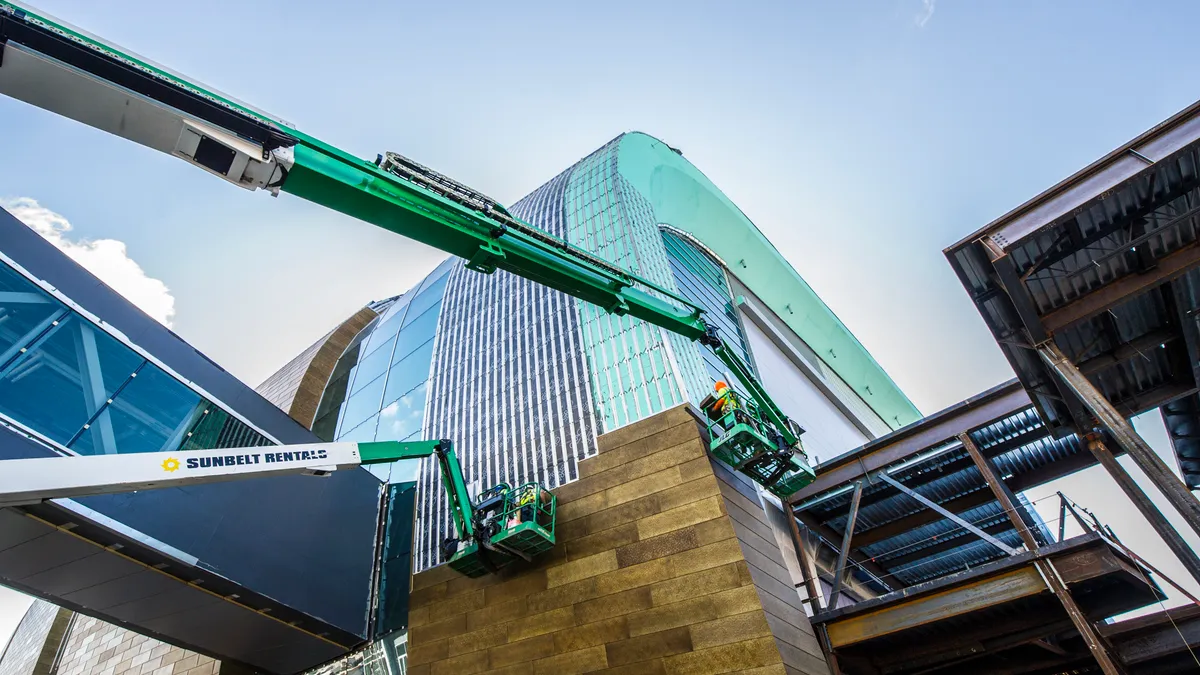Dive Brief:
- Nonresidential construction will hold steady for the remainder of 2018, but could see a downturn in 2020 or 2021, according to the Associated Builders and Contractors. The forecast is positive for this year because the construction backlog is elevated; plus, improving fiscal conditions in states and localities have made public entities players in the construction "recovery," ABC chief economist Anirban Basu said in the article.
- “The 2018 Mid-year Economic Outlook: A Time of Growth and Intrigue” report, published in Construction Executive magazine, said that the strong U.S. economy is helping the forecast, but that rapidly rising interest rates and material prices, combined with international trade issues, could cause a dip in the construction sector in two or three years.
- Other factors that could contribute to a construction downturn include the skilled trade shortage and increased costs related to getting materials to the jobsite because trucking firms also are facing a shortage of human capital.
Dive Insight:
The labor shortage continues to plague construction, but there are groups of individuals companies can look toward to help fill the gap. Military veterans are one such group. With 250,000 people leaving military service each year and looking for civilian employment, they represent enormous opportunity for construction employment. Skanska USA, Gilbane Building Co., Turner Construction and other firms, as well as nonprofits like Veteran’s Next Mission and Helmets to Hardhats offer veteran-specific skills development and training programs.
As baby boomers retire en masse, younger generations are infiltrating the American workforce. Although millennials sometimes get a bad rap as being lazy or entitled, they represent the largest generation in the U.S. labor force and, therefore, another huge opportunity. National Student Clearinghouse Research Center data shows that undergraduate construction programs saw the second-largest growth percentage this past spring — and the chronic worker shortage means there are plenty of high-paying jobs available for new graduates.
Prisons, too, represent a potential pipeline for workers. North Carolina’s Inmate Construction Program, for example, offers certification for prisoners who participate in 480 classroom hours and 6,000-plus hours of on-the-job training while incarcerated. Some prisons also offer certification through the National Center for Construction Education & Research, a common national certification program that is considered to be quite valuable.
Likewise, local recruiters can help find talent despite the worker shortage. Some companies, such as Kimmel & Associates, identify good fits and reach out to potential candidates whether they indicate they’re interested in a career change or not. This opens a line of communication that could lead to a job candidate down the road, if not immediately.












